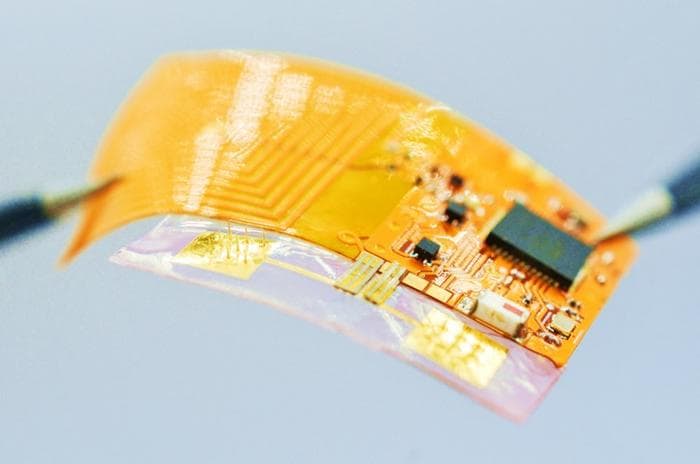
A team of US scientists has created a new drug delivery system which can receive commands wirelessly from a smartphone or computer to schedule and trigger the release of drugs from individual microneedles.
The Spatiotemporal On-Demand Patch (SOP)’s thin, soft platform resembles a plaster and was designed to enhance user comfort and convenience, since wearability is a crucial factor for chronically ill patients.
The research team, led by Juan Song, PhD, professor of pharmacology at the University of North Carolina (UNC) School of Medicine, and Wubin Bai, PhD, assistant professor of applied physical sciences at the UCN College of Arts and Sciences, tested the patch in a mouse model, using melatonin in the microneedles to improve sleep.
This research, published in the journal Nature Communications, opens the door to researching this wirelessly controlled patch to deliver on-demand treatments for neurodegenerative disorders such as Alzheimer’s disease.
Bai said: “SOP’s ability to enable joint delivery of multiple drugs could address various aspects of Alzheimer’s Disease, such as reducing beta-amyloid plaques, mitigating neuroinflammation and enhancing cognitive function.”
The patch, which has received a provisional patent, enables highly localised treatment – less than 1 square millimeter – of specific tissues, organs or regions within the body, and drug release can be triggered within 30 seconds in response to an electrical signal.
Patients could wear more than one patch at a time which would reduce the need for doctors’ visits, or even trips to the hospital for medical attention.
Song said: “The beauty of this device is that it can house dozens, if not hundreds, of concentrated drugs and can program their sequential release automatically.
“Rapid drug release can be crucial in emergency situations or when immediate therapeutic action is required.”
The microneedles are coated with gold to protect the drugs and surrounding tissues.
When a low-voltage electrical stimulus is applied through the patch, the gold coating disintegrates, exposing the drug-loaded microneedles to the skin and triggering the controlled release of the drugs.
Wang said: “This level of specificity ensures precise and customised drug delivery, catering to the needs of different conditions or specific regions of the body.
“This offers a novel approach to achieving controlled drug release through a combination of materials science and electrical engineering.”
Image: Bai Lab, UNC-Chapel Hill




